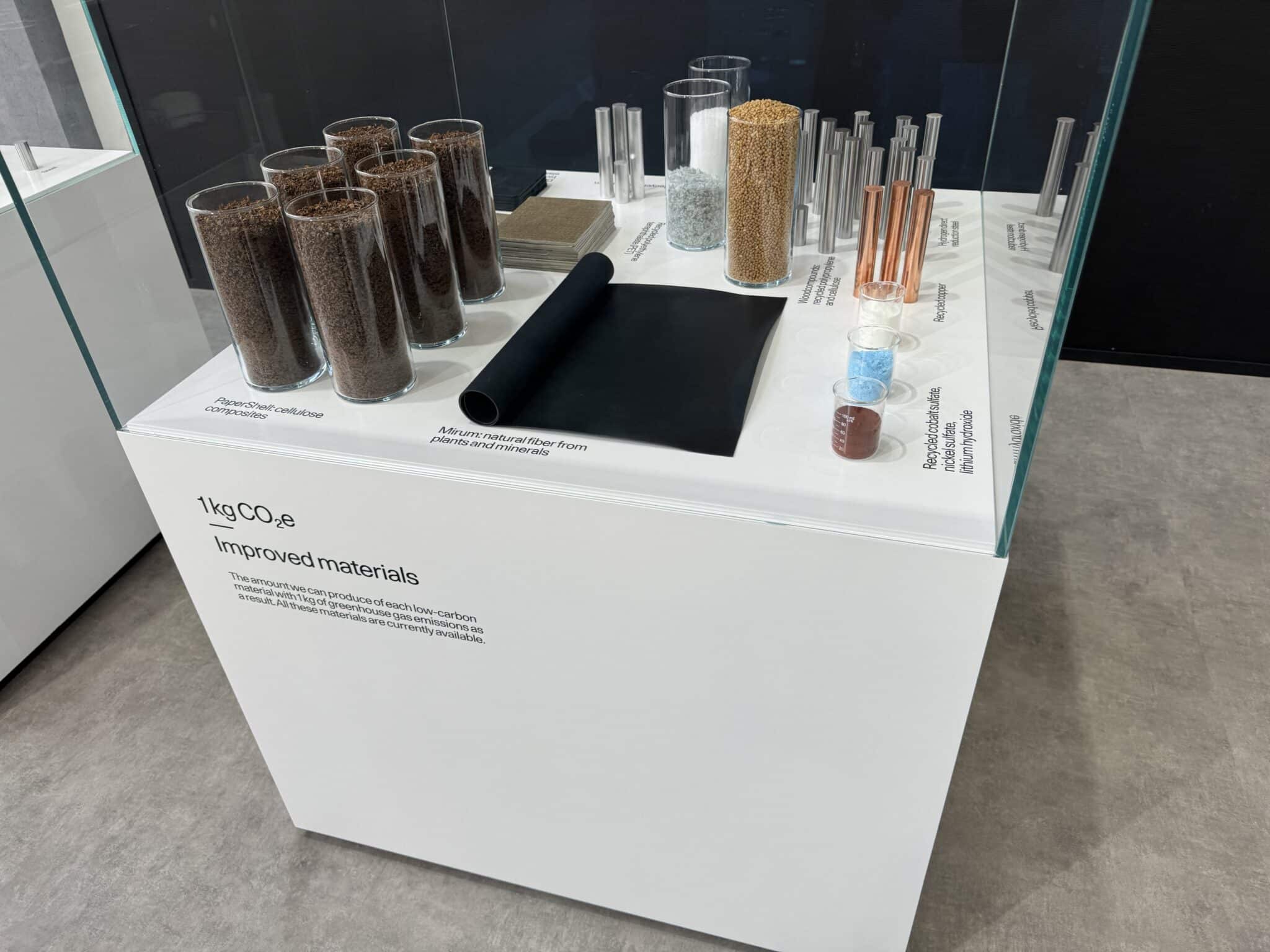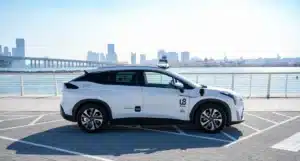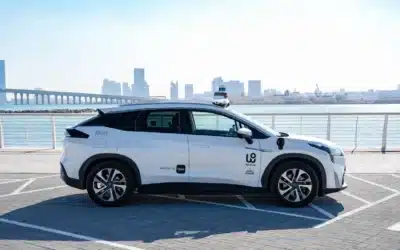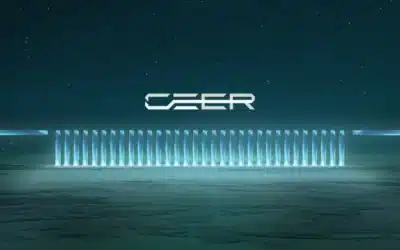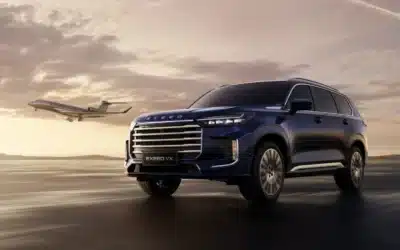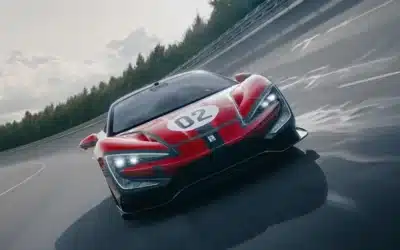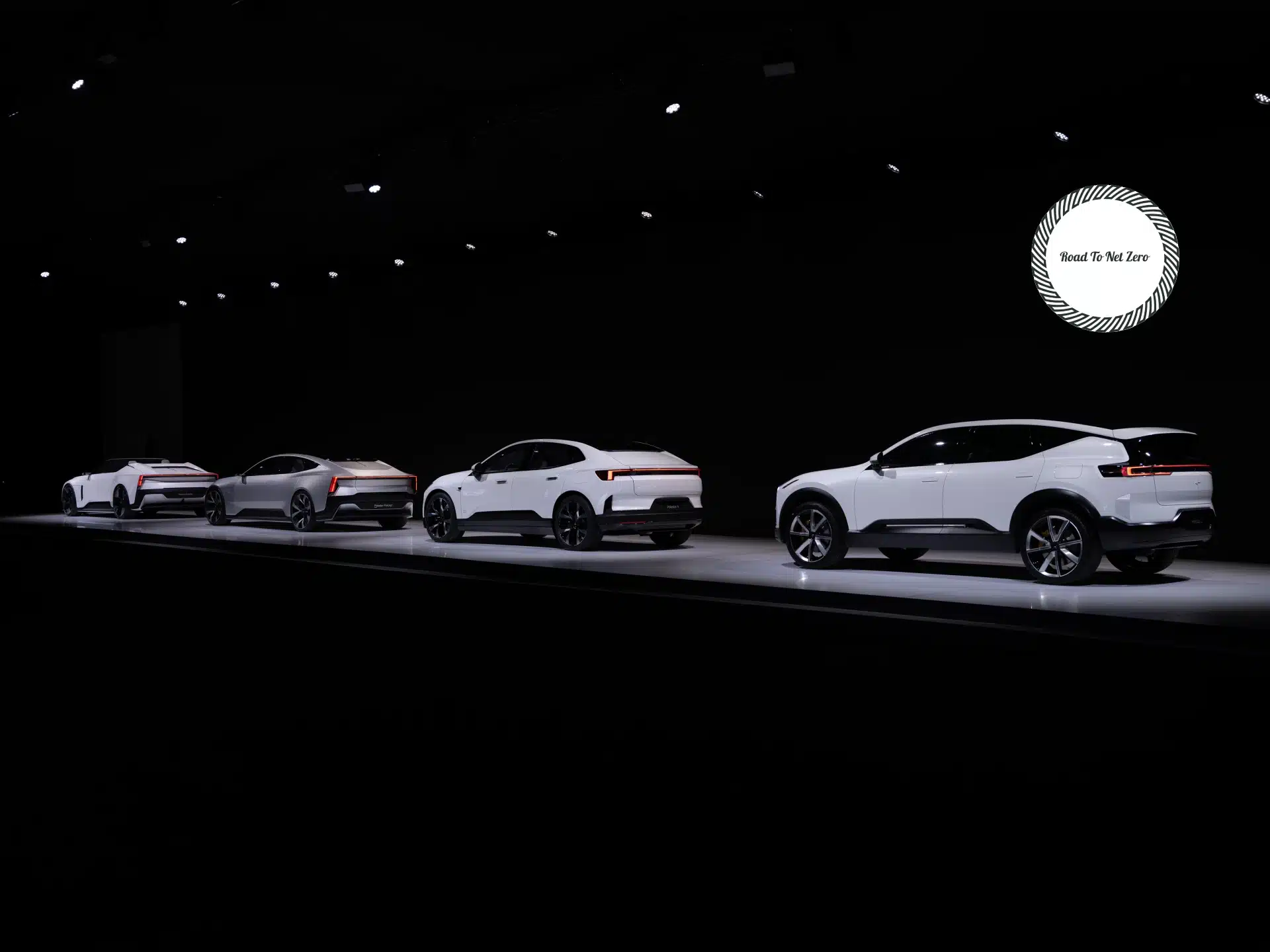
Something Swedish is set to be super-hot this coming year. And it’s not IKEA meatballs. All the signs are that Polestar, the Swedish electric car maker, is poised to become a major force in the automotive industry.
Speaking to guests at an event in Dubai at the start of COP28, the suave and energetic CEO of Polestar, Thomas Ingenlath, described the essence of the brand as being “pure, progressive, performance”.
The same could be true of the man himself. Dressed in a cream suit and tasteful mustard shirt (normally these words don’t go together!), Ingenlath perfectly matched the elegance of the Polestar 3 he shared the stage with in the minimalistically stylish warehouse in Alserkal Avenue. This uber-cool collection of galleries is playing host to artists, change-makers, and the climate curious, creating “a conscious space for sustainable development and cultural innovation” during COP28.
This attention to detail is reflected in every aspect of the brand. It is setting out to produce the best cars while being the most sustainable car company on the planet.
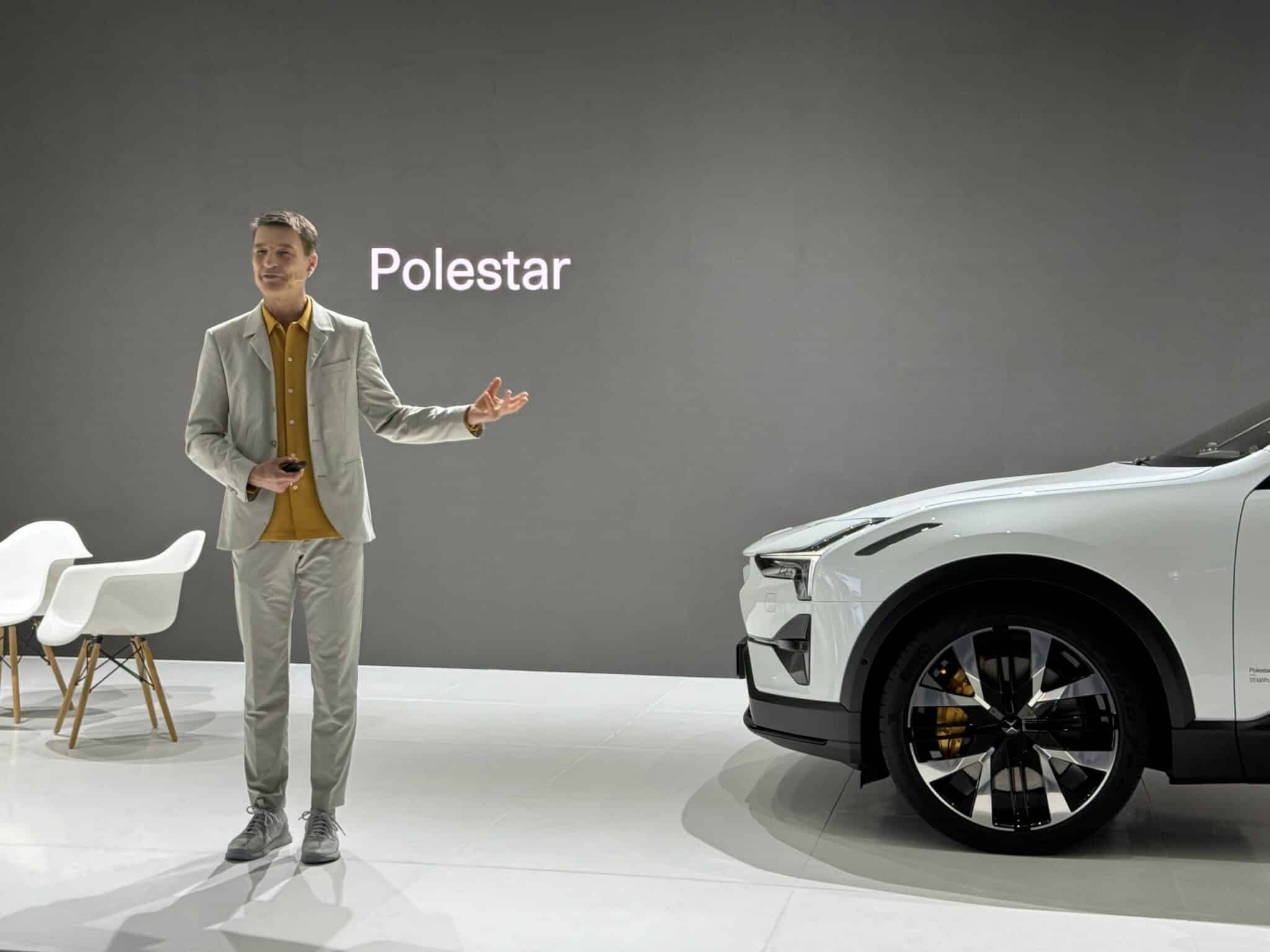
Thomas Ingenlath, CEO of Polestar, articulating his vision for the brand at an event in Dubai during COP28.
Ingenlath positions Polestar in the same exclusive auto category as Porsche. “Think of exclusivity as luxury without the guilt,” he says, while also explaining that he personally remains very involved in the design of each car.
Ingenlath, 59, is actually from Germany, not Sweden. He has an impeccable automotive career having completed his Master of Arts in Vehicle Design at the prestigious Royal College of Art in London. He started work at the Volkswagen Group, where he contributed to Audi and later became the chief exterior designer for Volkswagen. In 2000, he was appointed as Chief Designer at Škoda and later advanced to the role of Director of Design at the Volkswagen Design Center in Potsdam in 2006.
Ingenlath joined Volvo in 2012 as head of design and was instrumental in reshaping the brand’s image through his innovative design approaches. He became CEO of Polestar in 2017.
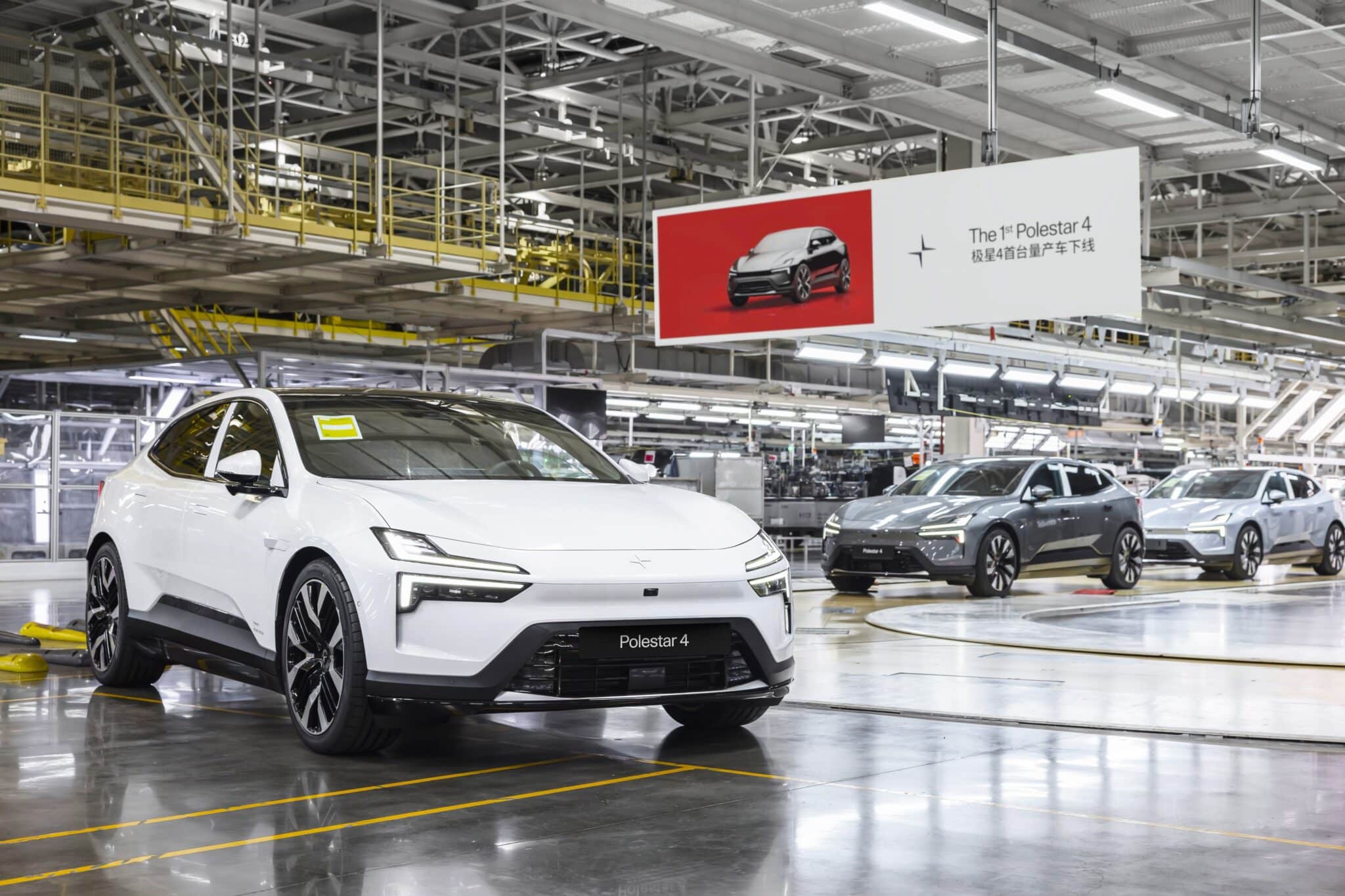
The first Polestar 4 coming off the production line in China. The expansion of the portfolio is an important milestone for the company. Photo from Polestar.
Polestar, the company
Polestar is based in Gothenburg, Sweden and is a joint venture between Chinese holding company Geely and that older Swedish icon, Volvo. The company went public on the US Nasdaq stock exchange in June 2022. Polestar primarily targets the global high-end pure EV market.
Despite experiencing a robust compound annual growth rate (CAGR) of 85% in revenue, Polestar has had to recalibrate its expectations recently as a result of challenging market conditions.
The company, which operates across 27 markets worldwide including the UAE, has announced a downward revision of its 2023 delivery forecast to around 60,000 vehicles, from an initial target of 80,000 units.
The company has also revised its gross margin target for 2023, halving it from the previously projected 4% to a more modest 2%.
Polestar has, however, received an additional USD 450 million funding boost in November from Geely and Volvo, providing critical support for the brand’s continued growth.
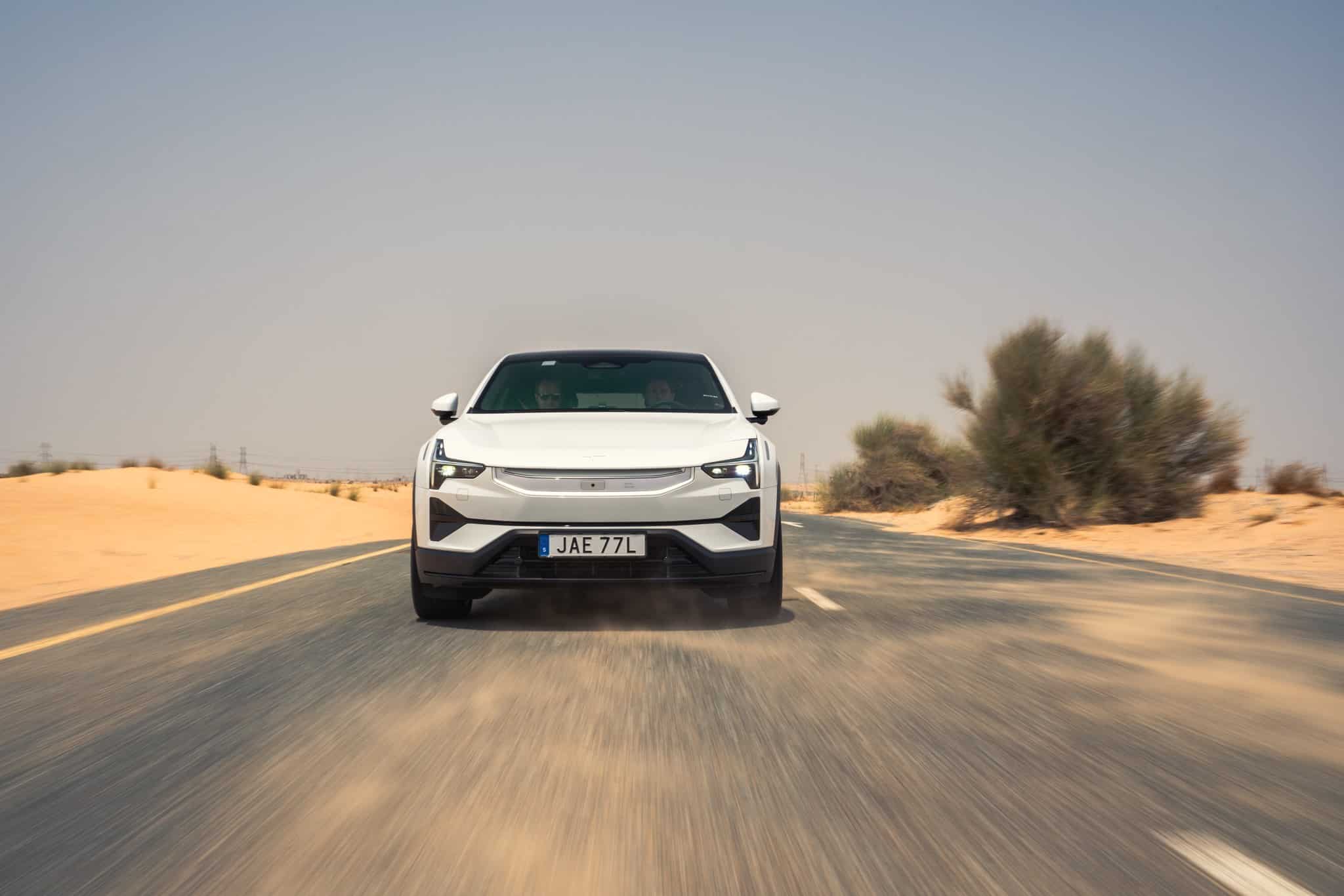
Polestar 3 during hot weather testing in the UAE. The car is set to be a very popular SUV, with a focus on sustainability.
While these figures don’t make it sound that impressive, it’s important to remember that Polestar’s portfolio is currently limited, with the Polestar 2 electric sports sedan as its sole mass-produced offering.
And it takes a long time and deep pockets to create a global automotive leader. Just ask Lucid, which is apparently subsidising each and every vehicle it produces to the tune of some USD 340,000.
However, Polestar is launching a number of other quality models over the next two yeara, which will see its sales and production figures grow significantly. It is also pursuing a sustainability strategy that doesn’t just reduce costs, but also positions it as a real pathfinder in the industry.
Great products and profound sustainability are the perfect combination for that savvy, high-spending consumer in their target markets.
Total commitment to sustainability
Polestar is building sustainability into every part of its business and every stitch of its sustainable seat covers.
As an EV-only car brand, its products are clearly more intrinsically ‘green’ than legacy car makers. But, even if there are no emissions coming from the tailpipe, the production of EVs is by no means pollution-free.
This is what Polestar is setting out to address. It has ambitious goals to produce a completely climate-neutral car by 2030.
The “Polestar 0” project is an ambitious initiative. It differs from traditional approaches to carbon neutrality, which often rely on offsetting emissions by planting trees or investing in renewable energy. Instead, Polestar aims to eliminate all emissions from the entire production process and supply chain of the car.
Described as their ‘moonshot’, this means addressing and reducing emissions at every stage, from the extraction of raw materials to the manufacturing of the vehicle, and even the energy used during the car’s production. The goal is to create a vehicle that has no net impact on the climate from the moment it is produced, without relying on traditional offsetting methods.
The approach requires innovation and changes across the entire automotive production process. It also demands close collaboration with suppliers and partners to find new, sustainable ways to produce car parts and assemble vehicles.
This model (pictured), displayed at the Al-Futtaim stand at COP28, shows the scale of the challenge. Each block represents the percentage of carbon footprint of the production of each Polestar 4 car. At the top is the battery modules, accounting for 35.2%, down to much smaller contributors such as the various fluids in the vehicle at just 0.7%. Even though the Polestar 4 has the lowest carbon impact in their range, in a carbon neutral car, it all has to go.
Overall, the company has a goal of reaching climate neutrality by 2040. That means eliminating all greenhouse gas emissions across the company’s entire operations, and all phases of their cars’ life cycles.
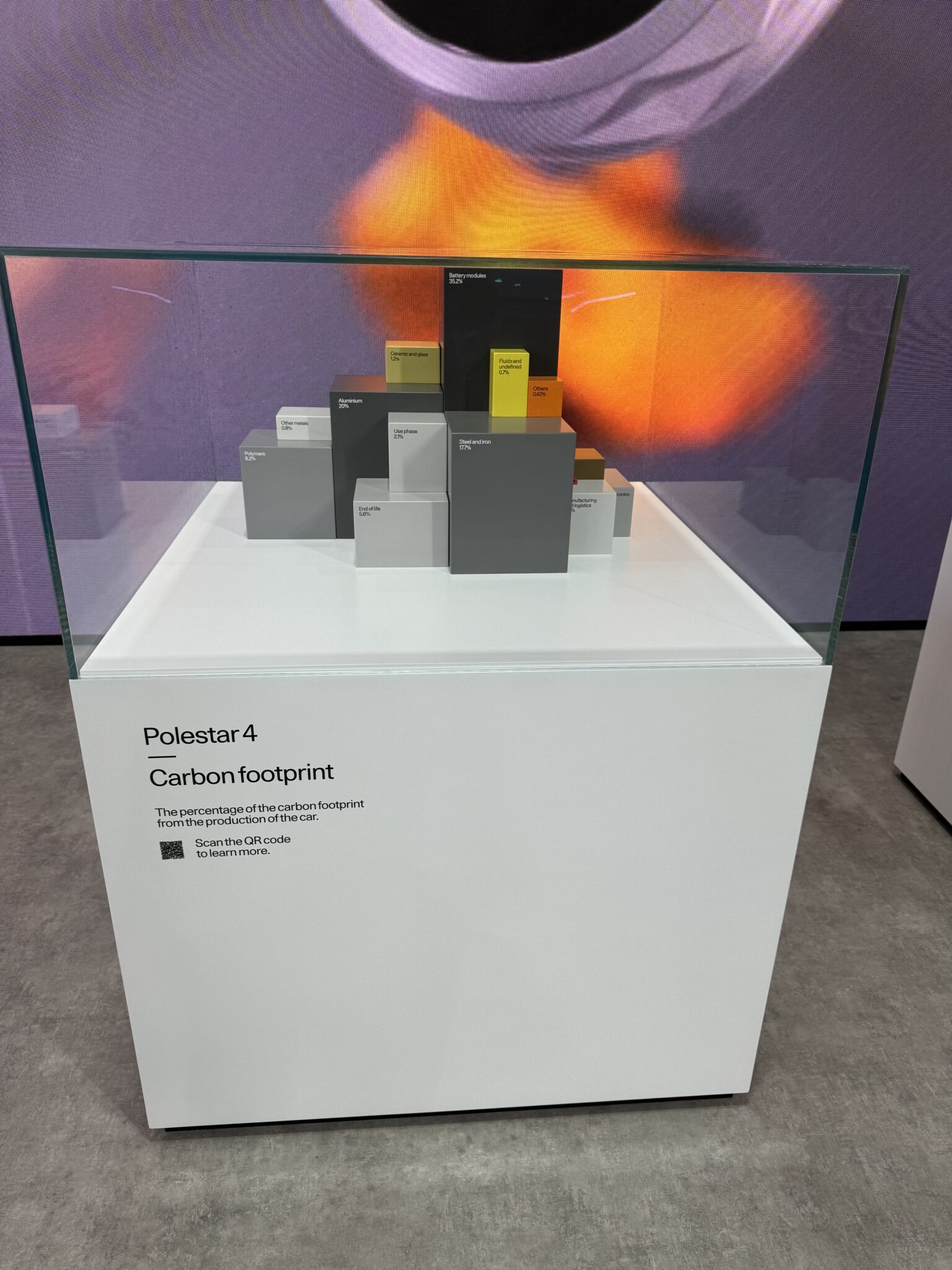
Polestar’s cars
As mentioned earlier, the Polestar 2 is the company’s only model with mass distribution currently. But not for long! The next couple of years will see the launch of four new models, of course all minimalistically-named in number sequence from 3 to 6.
Polestar 3
Coming soon is the Polestar 3, a stylish, high-performance electric SUV. It boasts a sleek design, powerful performance, and long range, making it a compelling option for those seeking an eco-friendly and exhilarating driving experience.
The Polestar 3 features a rakish design (how much was this influenced by Mr Ingenlath himself?) with a focus on aerodynamic efficiency. Its sleek silhouette and aero-channeling elements contribute to its impressive range of up to 609 kilometers.
In keeping with Polestar’s commitment to sustainability, the Polestar 3 is made with recycled materials wherever possible. The interior, for instance, features recycled plastics and renewable materials like flax-based composites and apple leather.
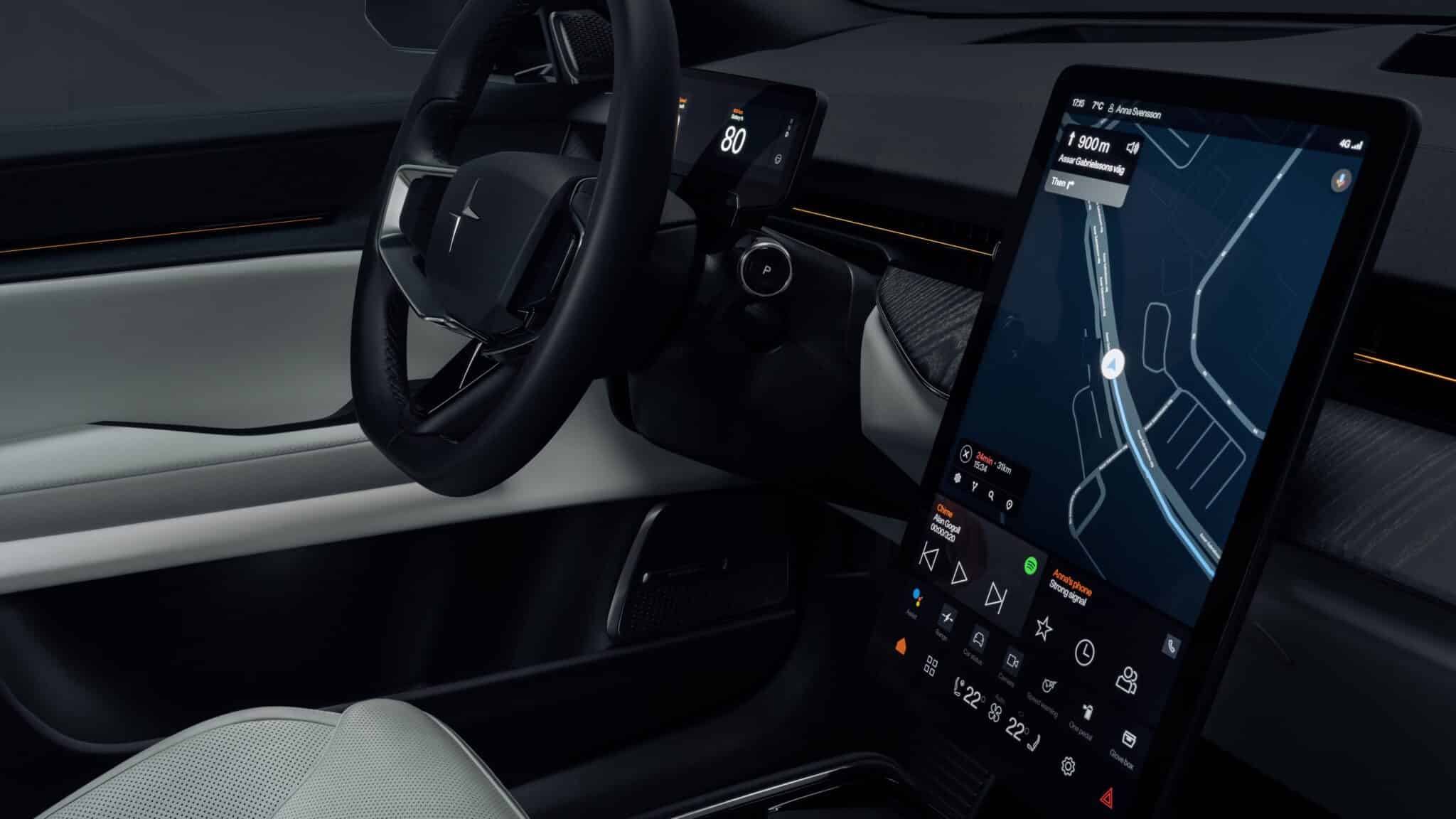
The interior of the Polestar 3 is aesthetically harmonized and uses sustainable materials.
In terms of performance, the Polestar 3 packs a punch with its rear-biased dual-motor powertrain. In standard form, it produces 358 kilowatts and 847 newton meters of torque, enabling it to accelerate from 0 to 100 km/h in just 4.2 seconds. For those seeking even more power, an optional Performance Pack adds an extra 20 kilowatts and 70 newton meters of torque, shaving 0.2 seconds off the 0-100 km/h sprint time.
The Polestar 3 is also equipped with a host of advanced technology features, including a new Nvidia Drive core computer that serves as an “AI brain” to process data from the car’s numerous sensors. This advanced system enables features such as adaptive cruise control, lane departure warning, and blind spot monitoring.
Polestar 4
The Polestar 4, available during 2024, is a two-row coupe crossover with a choice of rear-wheel drive or all-wheel drive. It has a range of up to 379 miles and can accelerate from 0 to 60 mph in as little as 4.2 seconds. The Polestar 4 is also equipped with a host of advanced technology features, including a new Nvidia Drive core computer.
The Polestar 4 features a sleek and aerodynamic design with a focus on sustainability and has the lowest carbon footprint of any Polestar car at launch. The exterior is made with recycled materials wherever possible, and the interior features recycled plastics and renewable materials like flax-based composites and apple leather.
In rear-wheel drive form, the 4 has a range of up to 379 miles, while the all-wheel drive variant has a range of up to 355 miles.
It was also announced at a recent Polestar event that Mobileye and Luminar are joining forces to bring LiDAR to Polestar 4 to enable Mobileye Chauffeur autonomous driving functionality in the future.
Polestar 5 and Polestar 6
The Polestar 5, an electric fastback sedan, is slated to arrive in 2025, promising to redefine performance expectations. With an estimated output of 884 horsepower, the Polestar 5 is poised to surpass the capabilities of the Porsche Taycan, both in terms of power and speed. Additionally, its 103-kWh battery boasts an estimated range of 300 miles, outperforming the Porsche Taycan in this aspect as well.
For those seeking an electric convertible, the Polestar 6 is set to make its debut in 2026. Utilizing the same architecture and powertrain as the Polestar 5, the Polestar 6 is also expected to deliver an impressive 884 horsepower. While its acceleration figures remain undisclosed, the Polestar 6 has the potential to become one of the world’s fastest electric vehicles.
Initially the company said that only 500 would be made, but is now saying demand is leading them to consider making many more.
What about Polestar 2?
To make sure it doesn’t get left behind its new siblings the Polestar 2 is getting a 2024 upgrade.
It retains the sleek and stylish design of the original model, but with some subtle changes. The front grille has been redesigned to be more aerodynamic, and the headlights have been updated with a new LED signature. The rear end has also been redesigned, with new taillights and a revised bumper.
The interior of the 2024 Polestar 2 has been significantly upgraded. The materials are more premium, and the build quality is even better. The infotainment system has been updated to a new 32-centimeter touchscreen unit, and the instrument cluster is now fully digital.
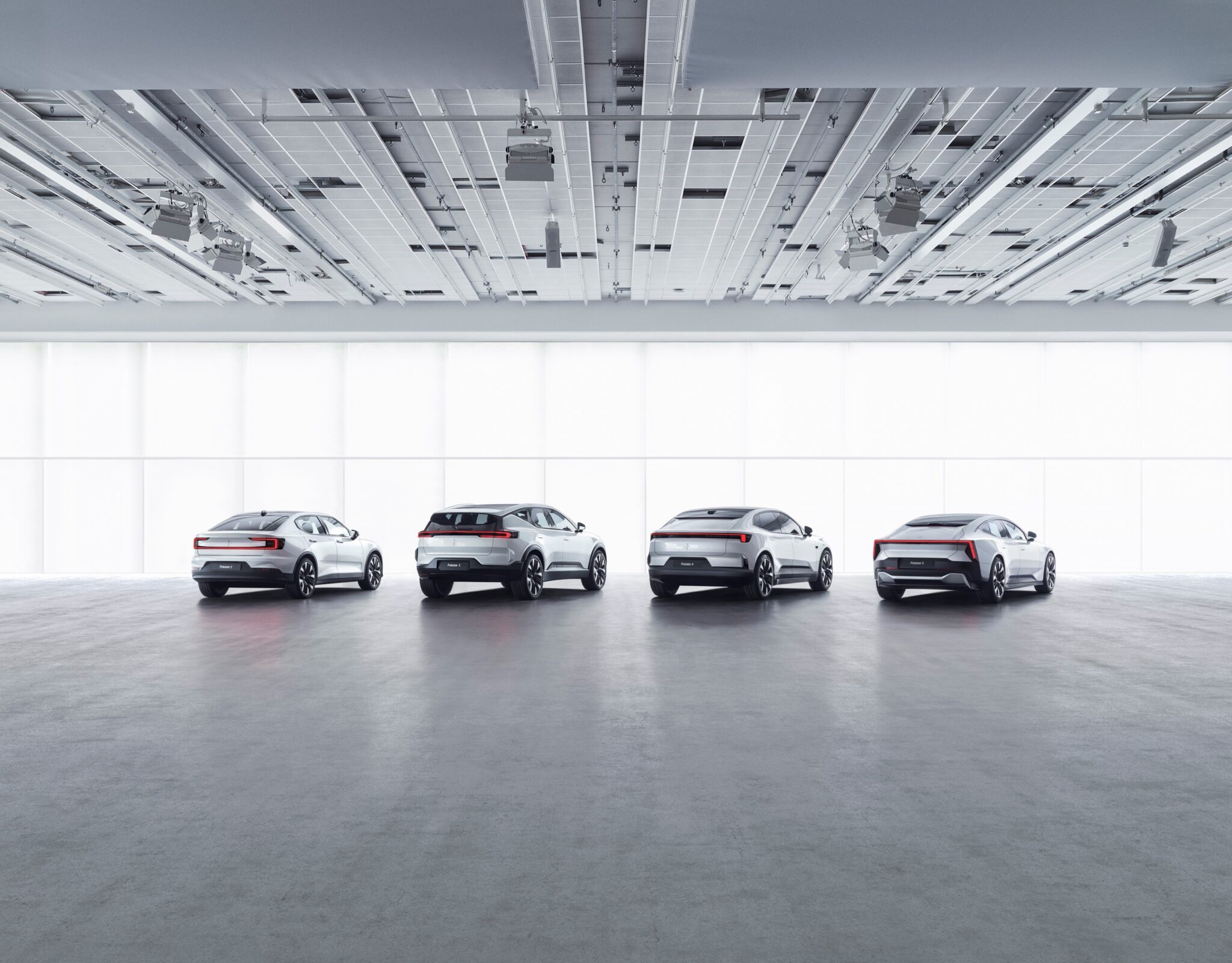
Lining up to become an even more potent force in the global EV landscape. From left to right, Polestar2, Polestar 3, Polestar 4, Polestar 5.
Constant innovation
By now, you will be getting the idea that Polestar is all about pushing the boundaries. This restless innovation, coupled with its focused approach to decarbonizing, means that the company is constantly announcing new developments and partnerships. It’s hard to keep up!
As well as the new cars and their pursuit of carbon neutrality, Mr Ingenlath’s team are investing substantially in new tech that will make a huge difference to drivers.
For example, one of Polestar’s battery partners, StoreDot, claims that it is on track to reduce the time to charge to 160-kilometre range to just three minutes by 2028, and is aiming for two minutes in 2032. That’s as quick as filling up with petrol.
Also in the area of battery technology, parent company Geely has recently signed an agreement with Nio to use their innovative battery-swapping tech in China. Simply drive into a special station and replace your depleted battery with a fully charged one. In time, if the technology is rolled out to Polestar and if there are enough stations, this could prove to be very consumer-friendly.
And one final example of Polestar’s innovation; the company is undertaking a large-scale vehicle-to-grid (V2G) project in Sweden that will connect a sizable fleet of Polestar 3 SUVs, allowing them to serve as a Virtual Power Plant (VPP). This will let EVs transfer power back to the grid when it is advantageous to do so, and charge during off-peak hours. Basically, owners will be able to make money from their cars rather than have them sitting idle.
All in all, Polestar’s plans are some of the most exciting and progressive in the industry. Given the energy and enthusiasm with which Thomas Ingenlath bounded onto the stage at his event in Dubai, the relentless pace of the company’s progress isn’t likely to slow down.

